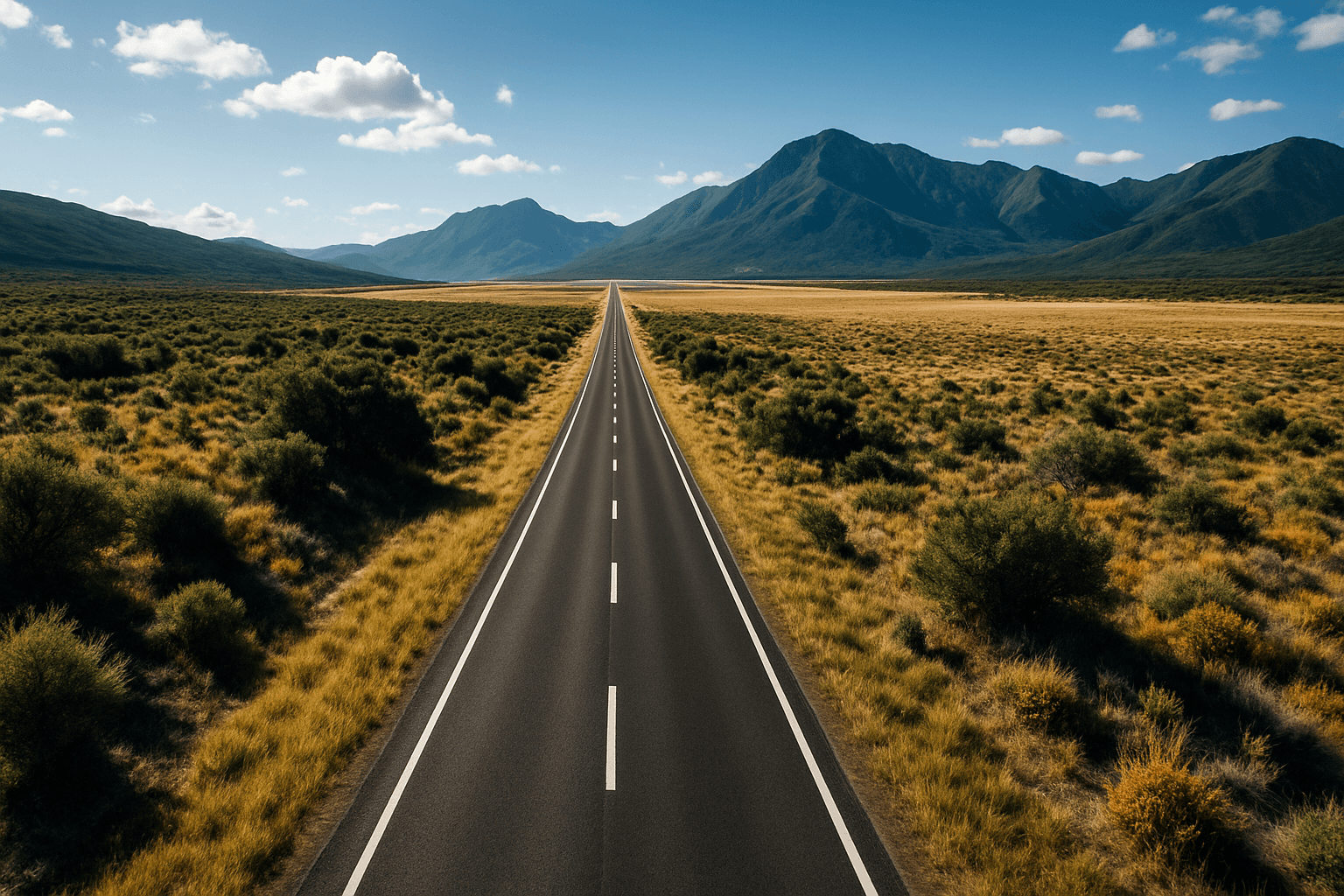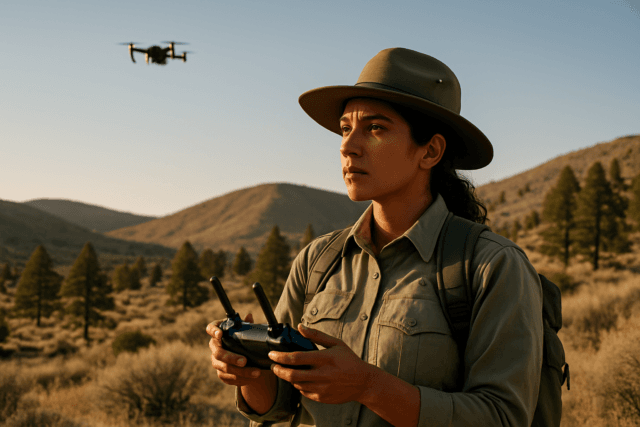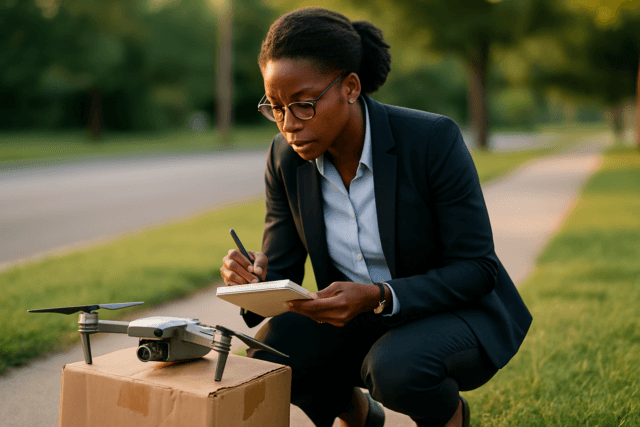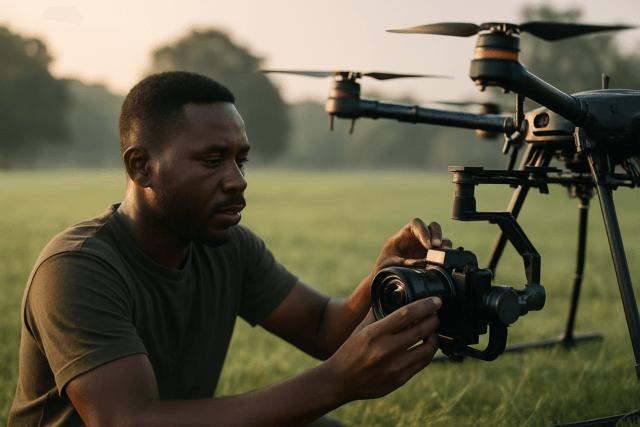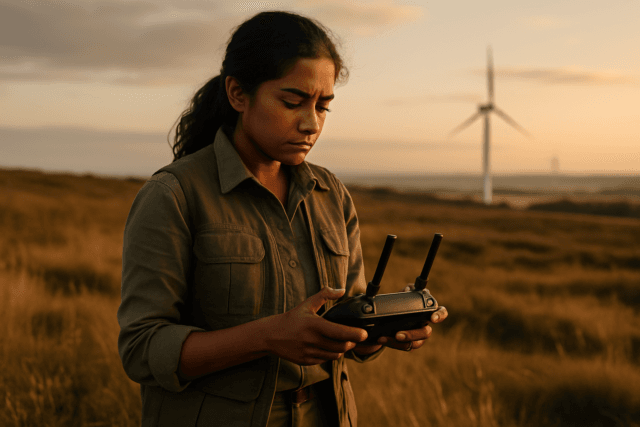Drone photography provides a unique bird’s-eye view, opening up exciting creative possibilities. Among the various composition techniques, using leading lines can significantly enhance the visual appeal and impact of your aerial shots. Leading lines draw the viewer’s eye into the scene, creating depth, movement, and a sense of story. This guide explores how to effectively use leading lines in drone photography to capture stunning and engaging images.
What are Leading Lines?
Leading lines are compositional elements that guide the viewer’s eye through an image, typically toward the main subject or a point of interest. They can be natural or man-made, including roads, rivers, fences, railway tracks, bridges, coastlines, patterns, or even shadows. The strategic use of leading lines adds depth, dimension, and a sense of direction to your photographs, making them more visually engaging.
Why Use Leading Lines in Drone Photography?
- Creates Depth and Dimension: Aerial shots can sometimes appear flat due to the lack of familiar perspective cues. Leading lines help create a sense of depth, drawing the viewer into the scene and making it feel more three-dimensional.
- Guides the Viewer’s Eye: Leading lines act as visual pathways, directing the viewer’s attention to the key elements of your composition. This ensures that the viewer notices what you want them to see and understands the story you’re trying to tell.
- Adds Movement and Interest: Lines inherently suggest movement. By incorporating them into your drone shots, you add dynamism and energy to otherwise static scenes.
- Enhances Storytelling: Leading lines can contribute to the narrative of your image. They can guide the viewer on a visual journey, revealing different aspects of the scene and creating a more immersive experience.
Identifying and Utilizing Leading Lines from Above
Aerial photography provides a unique perspective for spotting leading lines that might be less obvious from the ground. Here are some common examples and how to use them effectively:
Roads and Pathways
Roads are classic leading lines in drone photography. Whether winding through a landscape or cutting straight across the frame, roads can effectively draw the viewer’s eye.
- Tip: Experiment with different angles and altitudes to emphasize the road’s leading effect. Capture the road disappearing into the distance or leading to a prominent landmark.
Rivers and Coastlines
Rivers and coastlines naturally create flowing lines that can add a sense of movement and tranquility to your drone shots.
- Tip: Position your drone to capture the river or coastline as it curves through the landscape, leading the viewer’s eye towards a focal point like a bridge, a town, or a sunset.
Fences and Walls
Fences and walls can serve as strong, straight leading lines, particularly in agricultural or rural settings.
- Tip: Use fences to lead the viewer’s eye towards a farmhouse, a field, or a distant horizon. Consider the angle of the fence and how it intersects with other elements in the scene.
Railway Tracks
Railway tracks offer a powerful sense of perspective and direction. Their converging lines can create a dramatic effect, especially when leading to a distant train or station.
- Tip: Capture the railway tracks as they stretch towards the horizon, emphasizing the feeling of distance and the journey ahead.
Bridges
Bridges are excellent leading lines, connecting different parts of the landscape and creating a sense of connection.
- Tip: Position your drone to capture the bridge as it spans a river, a valley, or a highway, leading the viewer’s eye across the divide.
Geometric Patterns
Fields, forests, and urban landscapes often exhibit geometric patterns that can be used as leading lines. Rows of crops, lines of trees, or the grid-like layout of city streets can all create visually appealing compositions.
- Tip: Look for patterns that converge or radiate from a central point, drawing the viewer’s eye and creating a sense of order.
Shadows
Shadows can also act as leading lines, adding depth and drama to your drone photography. The long shadows cast by trees, buildings, or mountains can create interesting patterns and guide the viewer’s eye.
- Tip: Experiment with shooting during the golden hours (early morning and late afternoon) when shadows are longer and more pronounced.
Composition Techniques for Using Leading Lines
Rule of Thirds
Combine leading lines with the rule of thirds for balanced and engaging compositions. Position key elements along the lines or at their intersections to create a natural flow and draw the viewer’s eye.
Symmetry and Patterns
Look for symmetrical scenes or repeating patterns that incorporate leading lines. This can create a sense of order and harmony, while also guiding the viewer’s eye through the image.
Framing
Use natural or man-made elements to frame your subject and incorporate leading lines into the frame. This can add depth and context to your image, while also drawing attention to the main subject.
Varying Altitude and Angle
Experiment with different altitudes and camera angles to find the most effective way to use leading lines. Lower altitudes can create more dynamic compositions with longer lines, while higher altitudes can provide a broader perspective and emphasize the overall pattern.
Color and Contrast
Use color and contrast to enhance the effect of leading lines. Brightly colored roads or rivers can stand out against the surrounding landscape, while contrasting light and shadow can create dramatic lines and patterns.
The Decisive Moment
As Henri Cartier-Bresson, a master of leading lines, demonstrated, sometimes it’s about finding the right location and waiting for the “decisive moment” when a subject interacts with the leading lines in a meaningful way. This could be a person walking along a path, a train crossing a bridge, or a boat sailing down a river.
Drone Settings and Considerations
- Shoot in RAW: Capturing images in RAW format preserves the most detail and allows for greater flexibility in post-processing.
- Manual Mode: While auto mode can be helpful for beginners, switching to manual mode gives you more control over the shutter speed, aperture, and ISO, allowing you to fine-tune your settings for the desired effect.
- Shutter Speed: Use a faster shutter speed to avoid motion blur, especially on windy days.
- ISO: Keep the ISO as low as possible to minimize noise and maximize image quality.
- Filters: Consider using neutral density (ND) filters to reduce the amount of light entering the camera, allowing you to use slower shutter speeds for long-exposure effects.
- Check the Weather: Avoid flying in wet and windy conditions, as this can damage your drone and affect image quality.
Legal and Safety Considerations
- Regulations: Familiarize yourself with the drone regulations in your area. In the UK, this means following the guidelines set by the Civil Aviation Authority (CAA).
- No-Fly Zones: Be aware of no-fly zones, such as airports, military installations, and protected areas.
- Visual Line of Sight: Always keep your drone within visual line of sight.
- Privacy: Respect people’s privacy and avoid flying over private property or recording images without permission.
- Insurance: Ensure you have adequate insurance to cover any potential accidents or damages.
Examples of Leading Lines in Drone Photography
- A winding road through a mountain range: The road leads the viewer’s eye towards the distant peaks, creating a sense of scale and adventure.
- A river flowing into the sea: The river acts as a natural pathway, guiding the viewer’s eye towards the horizon and the vastness of the ocean.
- A row of trees lining a field: The trees create a strong linear element, leading the viewer’s eye across the landscape and emphasizing the agricultural setting.
- A bridge spanning a valley: The bridge connects the two sides of the valley, creating a sense of connection and leading the viewer’s eye towards the distant landscape.
- Shadows cast by buildings in a city: The shadows create interesting patterns and guide the viewer’s eye through the urban landscape.
Elevate Your Aerial Shots: Mastering Leading Lines
Using leading lines in drone photography is a powerful way to enhance your compositions, add depth and movement, and tell compelling visual stories. By carefully considering the lines in your environment and applying these techniques, you can capture stunning aerial images that draw the viewer in and leave a lasting impression. Always prioritize safety and respect local regulations when flying your drone, and let your creativity soar!

